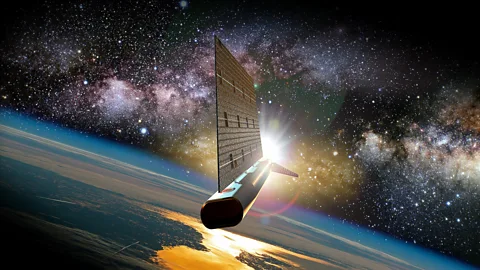
There's a new space race, but it's happening closer to home than you might expect—right at the edge of Earth's atmosphere.
High above Earth, a new space race is taking place. In this area, just above where space begins, companies are working to develop a new type of satellite. These sky skimmers aren't quite high-altitude planes and aren't quite low-orbit satellites. They're designed to orbit our planet in an unexplored region, offering potentially huge benefits.
About 10,000 satellites are currently orbiting our planet at speeds of up to 17,000 mph (27,000 km/h). Each of these delicate devices is in constant free-fall and would fall back to Earth if not for their incredible speed. It's their sideways momentum, perfectly balanced against Earth's gravitational pull, that keeps them in orbit.
A new type of satellite is trying to push the limits of this balance by entering a much lower orbit that skims the top of Earth's atmosphere. Known as Very Low Earth Orbit (VLEO), these spacecraft face much more air resistance than higher satellites, which could push them out of the sky. However, if they succeed, these satellites might achieve something even more amazing—they could potentially fly indefinitely.
"When you start describing it to people, it starts to sound like a perpetual motion machine," says Spence Wise, senior vice-president at Redwire, an aerospace firm in Florida. A perpetual motion machine is supposed to be impossible, but in this case, it almost is.
A few pioneering companies are developing designs for satellites that can orbit the planet at these unusually low altitudes while collecting air to create propellant—literally on the fly. This new generation of satellites could provide ultra-high-definition surveillance of ground activities or superfast satellite-based communications.
When you plan to send something into orbit, you need to decide how high your satellite will fly. Earth orbits are generally described by altitude and categorized into different sections. In high orbits, 22,000 miles (36,000 km) above Earth, satellites reach a geostationary position, meaning they stay above the same location on Earth. This is useful for telecommunications and weather monitoring. Next is Medium Earth orbit, ranging from about 22,000 miles (36,000 km) down to 1,200 miles (2,000 km) above the planet's surface. Below this is Low Earth orbit, which extends down to altitudes of 250 miles (400 km), where the International Space Station (ISS) is located.
